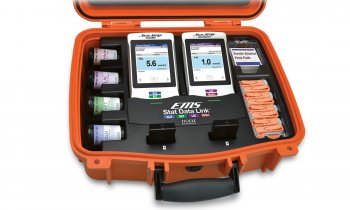E-health in the Netherlands
The Dutch E-health initiatives have made remarkable progress in recent years, writes Marcel Swennenhuis, President of Topicus HealthCare. Many solutions, such as online medication services, patient portals and web-based disease management initiatives, demonstrate the success of the country's EHR approach.
In 2005, the Dutch Ministry of Health embarked on a journey to implement a national Electronic Health Record for all Dutch citizens. Its goal is to improve the effectiveness and quality of care through the optimal use of ICT. Though the Dutch efforts may not often be cited in international contexts, progress over the last years has been impressive.
The Dutch follow both a top-down as well as a bottom-up approach. On the one hand, work is being done to establish a countrywide infrastructure (called AORTA) including elements such as an electronic healthcare provider card, a countrywide patient registry, security standards and legislation for one unique countrywide patient ID.
In parallel, local and regional initiatives have resulted in many implementations of solutions. Local software companies, e.g. Topicus HealthCare, were involved in these initiatives from the start. Topicus was instrumental in the overall architecture and technology solutions for the leading EHR regions. Solutions were deployed varying from an electronic medication service (showing all of a patient’s medication), a web service for weekend/evening doctors in duty (allowing them to access a specific view to the patient’s record during out-of-office hours), and integrated solutions for disease management such as diabetes. Web-based patient portals have been introduced, allowing patients to schedule appointments, re-order medication and have e-consultations. A web-based referral service has been introduced, allowing referring physicians to create and manage their referrals. This shows availability, waiting times, etc. It also allows hospitals and clinics to define their services interactively and add them to the referral service.
The Dutch approach strongly supports a gradual integration and co-existence with existing HCIT solutions. Not a ‘big bang’ replacement. Healthcare providers have invested heavily in HCIT over the last years. The Netherlands has one of the highest penetrations of practice management and HIS/CIS solutions. Additionally, 100% of hospitals have chosen digitised radiology (PACS). The EHR approach assumes the principle of autonomous healthcare providers. Information ‘stays at the source’, creating a ‘virtual’ record whereby healthcare providers can access information from other systems online through secured connections, one-time login, etc. Everything is based on patient consent. And it works.
Experience shows that involvement of healthcare providers in regional initiatives (covering 500,000 – one million patients) provides a good basis for success. Using existing regional cooperation structures, it creates a better understanding of the needs/benefits of the individual healthcare providers. The mutual trust stimulates willingness to share information. The implementations are done faster with greater acceptance. Fast and iterative software development approaches complement this flexible organisational approach.
The open competition model stimulates HCIT providers, such as Topicus, to work continuously on the cutting edge of e-health solutions. Using standards like IHE and HL7 discourages lock-in to specific vendors. At the same time, co-existence with older de facto standards and even proprietary protocols enable a gradual and smooth introduction and transition into the new e-health world.
In the coming years regional initiatives are expected to cover the entire country, whilst, in parallel, all regional solutions will connect to the countrywide infrastructure. The solution space is now being extended to new services, for example other disease management solutions, home care, youth care and more.
01.09.2008











